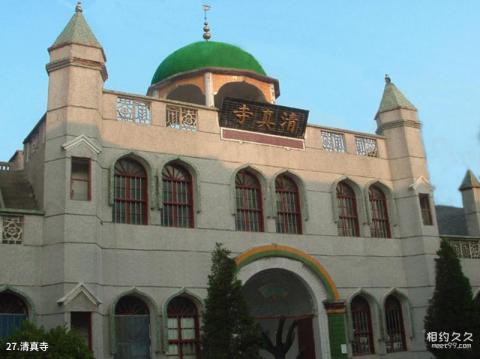
Mosque introduction: Miancheng is the only district-level Hui town in Hubei Province. There are more than 5,000 Hui people in the town. The mosque is the symbol of Miancheng Hui town. Before the founding of the People's Republic of China, there were two mosques in Miancheng: the East Mosque was located in Qili City and was built during the Hongwu period of the Ming Dynasty, covering an area of 4,500 square meters; the West Mosque was located at Honghuadi, built during the Jiaqing period of the Qing Dynasty, with a construction area of 2,500 square meters. In 1941, both temples were destroyed by war, and a large number of Islamic classics, periodicals, various cultural relics, and inscriptions stored in the temples were lost.
In 1955, the government allocated funds to rebuild the Miancheng Mosque on the ruins of the Honghuadi Mosque. In 1987, after the Hui Town was established in Miancheng, the government once again allocated funds to renovate and expand the original mosque. The scale of the existing building is doubled and a new pattern is formed. There is a 2-story gatehouse facing the street, with round arches on the roof, wall decorations, doors and windows all in Arabic architectural style. Through a courtyard about 30 meters long and 18 meters wide, it is a pilgrimage hall in Chinese antique architectural style, simple and elegant. The interior is spacious and the overall shape is solemn, solemn and elegant, full of national charm and Islamic cultural characteristics. It can accommodate more than 300 Muslims at a time.
